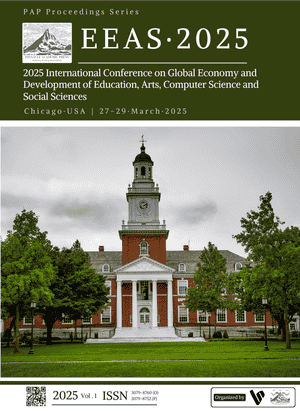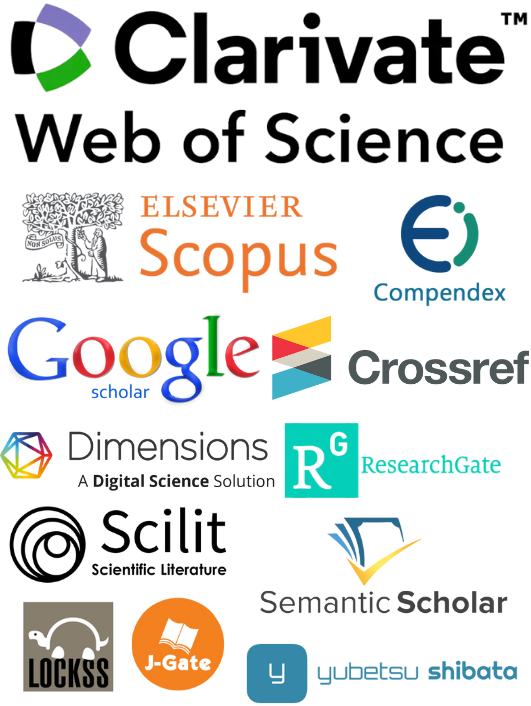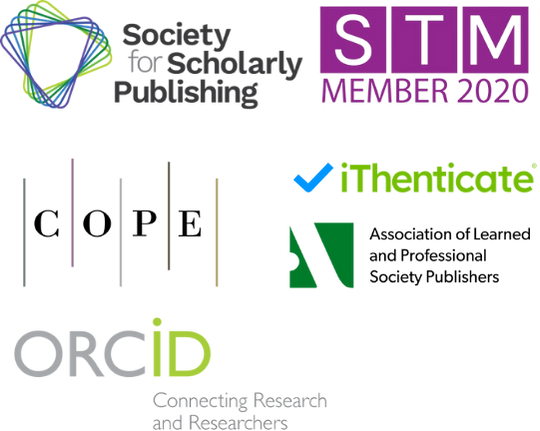Green Supply Chain Management and Firm Performance in the Digital Era
Keywords:
digital economy, green supply chain management, corporate performance, sustainability, digital technologyAbstract
Against the backdrop of increasing global environmental awareness and the rapid development of the digital economy, green supply chain management (GSCM) has gradually become one of the important means to promote sustainable development and improve corporate performance. This paper explores the role of green supply chain management in promoting sustainable development and improving corporate performance in the digital economy era. This paper focuses on analyzing how digital technologies (such as big data, the Internet of Things, and blockchain) support the application of green supply chain management in enterprises, and explores the specific impact of green supply chain management on corporate financial performance, operational efficiency, and brand reputation. This study aims to analyze how enterprises can improve corporate performance through green supply chain management (GSCM) in the context of the digital economy, focusing on the application of digital technologies in green supply chains and their impact on reducing costs, improving efficiency, brand value, and environmental protection.
References
1. R. A. Rupa and A. N. M. Saif, “Impact of green supply chain management (GSCM) on business performance and environmental sustainability: Case of a developing country,” Bus. Perspect. Res., vol. 10, no. 1, pp. 140–163, 2022, doi: 10.1177/2278533720983089.
2. N. Saini, K. Malik, and S. Sharma, “Transformation of supply chain management to green supply chain management: Certain investigations for research and applications,” Cleaner Mater., vol. 7, p. 100172, 2023, doi: 10.1016/j.clema.2023.100172.
3. D. Hariyani, P. Hariyani, S. Mishra, and M. K. Sharma, “Leveraging digital technologies for advancing circular economy practices and enhancing life cycle analysis: A systematic literature review,” Waste Manag. Bull., 2024, doi: 10.1016/j.wmb.2024.06.007.
4. S. Chauhan, R. Singh, A. Gehlot, S. V. Akram, B. Twala, and N. Priyadarshi, “Digitalization of supply chain management with industry 4.0 enabling technologies: A sustainable perspective,” Processes, vol. 11, no. 1, p. 96, 2022, doi: 10.3390/pr11010096.
5. H. Nozari, M. Fallah, H. Kazemipoor, and S. E. Najafi, “Big data analysis of IoT-based supply chain management considering FMCG industries,” Bizinform. (Eng.), vol. 15, no. 1, pp. 78–96, 2021, doi: 10.17323/2587-814X.2021.1.78.96.
6. M. Birasnav, R. Chaudhary, J. H. Dunne, J. Bienstock, and C. Seaman, “Green supply chain management: A theoretical framework and research directions,” Comput. Ind. Eng., vol. 172, p. 108441, 2022, doi: 10.1016/j.cie.2022.108441.
7. A. Raihan, “A review of the potential opportunities and challenges of the digital economy for sustainability,” Innov. Green Dev., vol. 3, no. 4, p. 100174, 2024, doi: 10.1016/j.igd.2024.100174.
8. L. Tan, Z. Yang, M. Irfan, C. J. Ding, M. Hu, and J. Hu, “Toward low-carbon sustainable development: Exploring the impact of digital economy development and industrial restructuring,” Bus. Strat. Environ., vol. 33, no. 3, pp. 2159–2172, 2024, doi: 10.1002/bse.3584.
9. L. Xia, S. Baghaie, and S. M. Sajadi, “The digital economy: Challenges and opportunities in the new era of technology and electronic communications,” Ain Shams Eng. J., vol. 15, no. 2, p. 102411, 2024, doi: 10.1016/j.asej.2023.102411.
10. S. Taj, A. S. Imran, Z. Kastrati, S. M. Daudpota, R. A. Memon, and J. Ahmed, “IoT-based supply chain management: A sys-tematic literature review,” Internet of Things, vol. 24, p. 100982, 2023, doi: 10.1016/j.iot.2023.100982.
11. Y. Yang, J. Chen, P. K. Lee, and T. C. E. Cheng, “How to enhance the effects of the green supply chain management strategy in the organization: A diffusion process perspective,” Transp. Res. Part E: Logist. Transp. Rev., vol. 175, p. 103148, 2023, doi: 10.1016/j.tre.2023.103148.
12. E. K. S. Wong, H. Y. Ting, and A. F. Atanda, “Enhancing supply chain traceability through blockchain and IoT integration: A comprehensive review,” Green Intell. Syst. Appl., vol. 4, no. 1, pp. 11-28, 2024, doi: 10.53623/gisa.v4i1.355.
13. J. Yi, S. Dai, L. Li, and J. Cheng, “How does digital economy development affect renewable energy innovation?” Renew. Sustain. Energy Rev., vol. 192, p. 114221, 2024, doi: 10.1016/j.rser.2023.114221.
14. B. Li, C. Xu, Y. Wang, Y. Zhao, Q. Zhou, and X. Xing, “Digital transformation, supply chain collaboration, and enterprise growth: Theoretical logic and Chinese practice,” Eur. Res. Manag. Bus. Econ., vol. 30, no. 2, p. 100249, 2024, doi: 10.1016/j.iedeen.2024.100249.
15. M. Zheng and C. Y. Wong, “The impact of digital economy on renewable energy development in China,” Innov. Green Dev., vol. 3, no. 1, p. 100094, 2024, doi: 10.1016/j.igd.2023.100094.
16. J. Dian, T. Song, and S. Li, “Facilitating or inhibiting? Spatial effects of the digital economy affecting urban green technology innovation,” Energy Econ., vol. 129, p. 107223, 2024, doi: 10.1016/j.eneco.2023.107223.
17. X. Ma, X. Feng, D. Fu, J. Tong, and M. Ji, “How does the digital economy impact sustainable development?—An empirical study from China,” J. Clean. Prod., vol. 434, p. 140079, 2024, doi: 10.1016/j.jclepro.2023.140079.
18. P. Agarwal and A. Gupta, “Harnessing the power of enterprise resource planning (ERP) and customer relationship manage-ment (CRM) systems for sustainable business practices,” Int. J. Comput. Trends Technol., vol. 72, no. 4, pp. 102–110, 2024, doi: 10.14445/22312803/IJCTT-V72I4P113.
19. F. Liao, Y. Hu, M. Chen, and S. Xu, “Digital transformation and corporate green supply chain efficiency: Evidence from China,” Econ. Anal. Policy, vol. 81, pp. 195–207, 2024, doi: 10.1016/j.eap.2023.11.033.
20. G. Sun, J. Fang, J. Li, and X. Wang, “Research on the impact of the integration of digital economy and real economy on enter-prise green innovation,” Technol. Forecast. Soc. Change, vol. 200, p. 123097, 2024, doi: 10.1016/j.techfore.2023.123097.
21. J. Dian, T. Song, and S. Li, “Facilitating or inhibiting? Spatial effects of the digital economy affecting urban green technology innovation,” Energy Econ., vol. 129, p. 107223, 2024, doi: 10.1016/j.eneco.2023.107223.
22. M. Javaid, A. Haleem, R. P. Singh, and A. K. Sinha, “Digital economy to improve the culture of industry 4.0: A study on features, implementation and challenges,” Green Technol. Sustain., vol. 100083, 2024, doi: 10.1016/j.grets.2024.100083.
23. T. Nguyen, Z. H. O. U. Li, V. Spiegler, P. Ieromonachou, and Y. Lin, “Big data analytics in supply chain management: A state-of-the-art literature review,” Comput. Oper. Res., vol. 98, pp. 254–264, 2018, doi: 10.1016/j.cor.2017.07.004.
24. D. Q. Chen, D. S. Preston, and M. Swink, “How the use of big data analytics affects value creation in supply chain management,” J. Manag. Inf. Syst., vol. 32, no. 4, pp. 4–39, 2015, doi: 10.1080/07421222.2015.1138364.
25. W. Jiang, “An intelligent supply chain information collaboration model based on internet of things and big data,” IEEE Access, vol. 7, pp. 58324–58335, 2019, doi: 10.1109/ACCESS.2019.2913192.
26. M. Seyedan and F. Mafakheri, “Predictive big data analytics for supply chain demand forecasting: methods, applications, and research opportunities,” J. Big Data, vol. 7, no. 1, p. 53, 2020, doi: 10.1186/s40537-020-00329-2.
27. J. Mageto, “Big data analytics in sustainable supply chain management: A focus on manufacturing supply chains,” Sustaina-bility, vol. 13, no. 13, p. 7101, 2021, doi: 10.3390/su13137101.
28. T. K. Eltayeb, S. Zailani, and T. Ramayah, “Green supply chain initiatives among certified companies in Malaysia and envi-ronmental sustainability: Investigating the outcomes,” Resour., Conserv. Recycl., vol. 55, no. 5, pp. 495–506, 2011, doi: 10.1016/j.resconrec.2010.09.003.
29. X. Yang, Y. Xu, A. Razzaq, D. Wu, J. Cao, and Q. Ran, “Roadmap to achieving sustainable development: Does digital economy matter in industrial green transformation?” Sustainable Development, vol. 32, no. 3, pp. 2583–2599, 2024, doi: 10.1002/sd.2277.
30. M. M. Fritz, “A supply chain view of sustainability management,” Cleaner Prod. Lett., vol. 3, p. 100023, 2022, doi: 10.1016/j.clpl.2022.100023.
31. H. Jafari, S. R. Hejazi, and M. Rasti-Barzoki, “Sustainable development by waste recycling under a three-echelon supply chain: A game-theoretic approach,” J. Clean. Prod., vol. 142, pp. 2252-2261, 2017, doi: 10.1016/j.jclepro.2016.11.051.
32. I. Olajos and S. Pálfay, “Integration of the Crisis Rules Created by COVID-19 into the European Common Agricultural Policy and Hungarian Agricultural Legislation,” Int'l J. Changing World, vol. 3, p. 105, 2024, doi: 10.54934/ijlcw.v3i1.92.
33. S. Chen, Y. Song, and P. Gao, “Environmental, social, and governance (ESG) performance and financial outcomes: Analyzing the impact of ESG on financial performance,” J. Environ. Manag., vol. 345, p. 118829, 2023, doi: 10.1016/j.jenvman.2023.118829.
34. D. Hariyani, P. Hariyani, S. Mishra, and M. K. Sharma, “A literature review on green supply chain management for sustainable sourcing and distribution,” Waste Manag. Bull., 2024, doi: 10.1016/j.wmb.2024.11.009.
Downloads
Published
Issue
Section
License
Copyright (c) 2025 Haoran Li (Author)

This work is licensed under a Creative Commons Attribution 4.0 International License.



